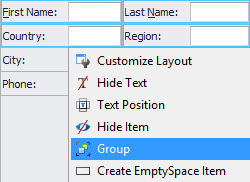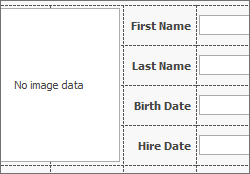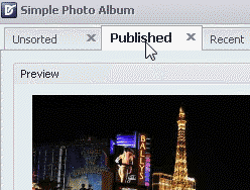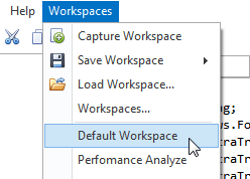Form Layout Managers
- 4 minutes to read
This section includes all controls that build and/or manage the global layout of your application forms.
Layout and Data Layout Controls
| The traditional pixel-oriented approach to application form design is inefficient. To create an elegant and easy-to-use UI, you must spend countless hours to arrange presentation controls on forms, align them correctly, position labels where appropriate, address form resolution issues and when specifications change, start the process over again.
|
Layout Panels
| Two panels for simple scenarios when you do not need the huge feature set of Layout and Data Layout Controls.
|
Tabbed MDI Manager
| The Tabbed MDI Manager, represented by the XtraTabbedMdiManager component, is a light version of the Application UI Manager that renders your child forms as tabs or floating MDI windows. It has all the basic functionality required for simple forms.
|
Tab Control
| The simplest tool for creating tabs. Unlike the Tabbed MDI Manager or Application UI Manager components, the Tab Control does not manage separate forms, converting them to MDI windows. This tool is used only when you need tabbed layout within one form.
|
Wizard Control
| Whether designed to break-down complex data entry forms or to provide step-by-step guidance for the end-user, wizards have become an indispensable UI solution for software developers. With the DevExpress Wizard control, you drop the control and instantly turn your form into a multi-page wizard. All you need to worry about is actual page content and implementing your own navigation logic, if necessary.
|
Workspace Manager
| Many DevExpress controls that support runtime customization provide the ability to save the modified layout (e.g., to a local storage) so it can be re-applied later. And if your end-users wish to customize more than one such control, the tedious save-load routine comes. The WorkspaceManager provides the centralized way for your end-users to manage the layout of the entire application. After being dropped on the form, the Workspace Manager automatically detects all supported DevExpress controls and is ready to take the snapshot of your current layout.
|





